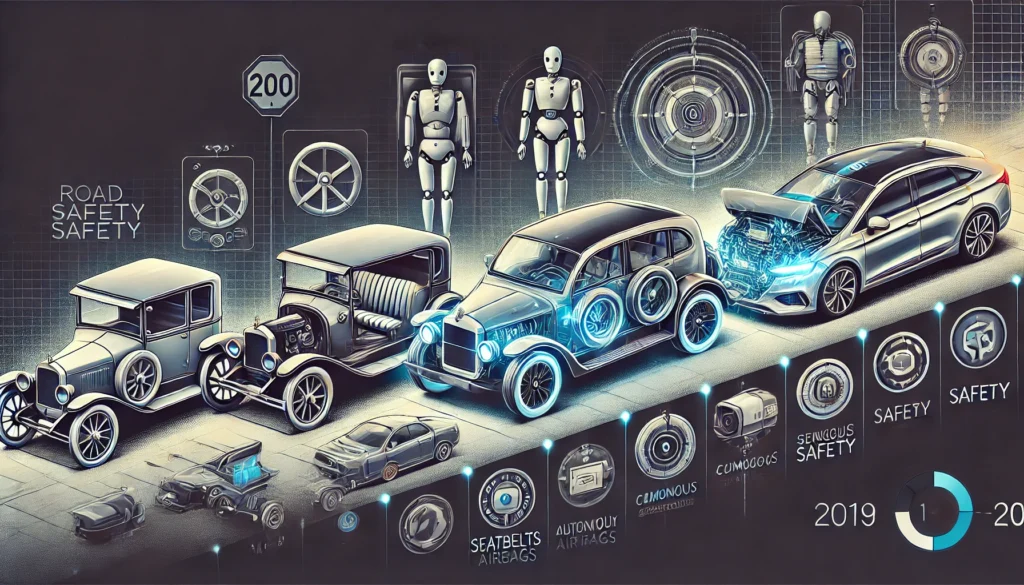The Early Days of Car Safety Evolution
The article explores how far the Evolution of Car Safety has come, from the early cars to some of the current systems. Read on to go through a brief history of some of the safety features incorporated in vehicles recently. It focuses on essential inventions and outlines how a piece of regulation and technology has become vital in enhancing the safety of vehicles. Returning to the history of the development of the principles of car safety, we will realize how these changes have transformed the driving process into one of the safest activities possible.
The History and Development of Car Safety Features
- The development of car safety features can be presented by progressing from the primary aspects, such as a seat belt, to modern technologies, such as the ADAS.
- The primary driver to increased safety features in vehicles has been government regulations that have insisted on replacing car parts that do not meet safety standards.
- In cars, technologies like airbags and anti-lock brakes have tremendously cut short the degree of injuries in accidents.
- Features such as adaptive cruise control and automatic emergency braking provide better driver safety in their cars.
- More autonomous driving functions and AI-based safety systems will likely play a central role in further car safety developments.
The Birth of Seatbelts: A Key Innovation in Vehicle Safety
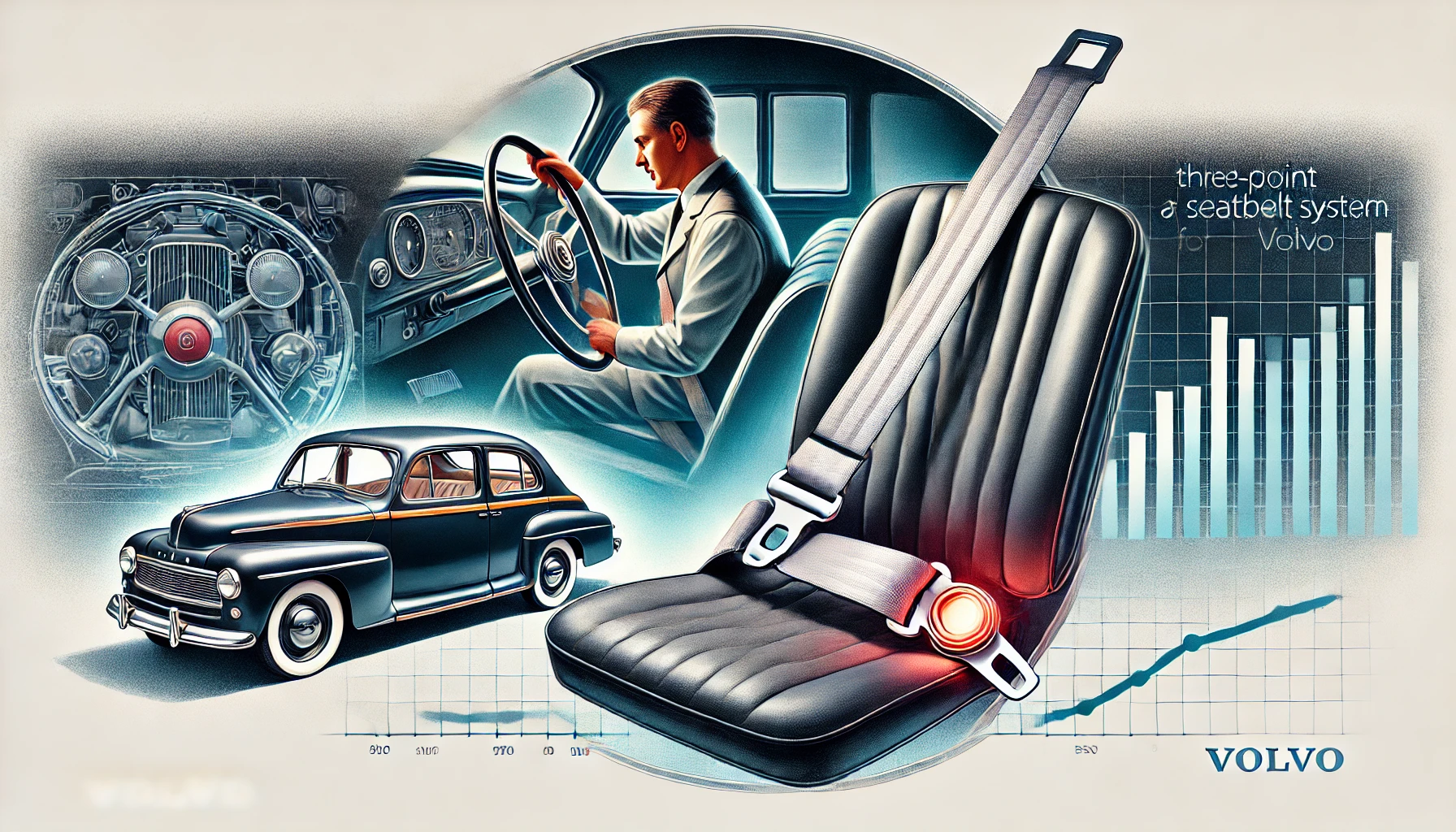
Thus, if one travels back to when car technologies were first introduced, one would know that safety should have been given the importance it deserved. It was easy to see that people cared more about how fast and sleek their cars were. However, as vehicles became more popular, people heard knocking and realized that accidents are actual. Before one could imagine it, some intelligent people started contemplating making driving more secure.
The Rise of Mandatory Car Safety Features: Govt Regulations and Industry Standards
Later, a few innovative products began flaring up in the early days. Mary Anderson invented the windshield wiper in 1903; this was an opener for driving in rainy conditions. There was Édouard Bénédictus, who developed safety glass by complete accident, as seen here. This stuff wouldn’t turn into hazardous fragments; this fact won a victory for helping individuals remain protected in accidents.
Technological Milestones in Car Safety: Airbags, ABS, and More
Now, let’s talk about seatbelts. Instead of the current popular modern machines with a seatbelt, cars previously used these standard lap straps that could have been more effective. The three-point seat belt was designed in 1959 by Nils Bohlin, an engineer working for Volvo. It was big because it prevented folks from flying around during a crash. It was an absolute lifesaver for them or their survivors, altering how people held on to car safety.
The Rise of Mandatory Car Safety Features
Government Regulations and Industry Standards
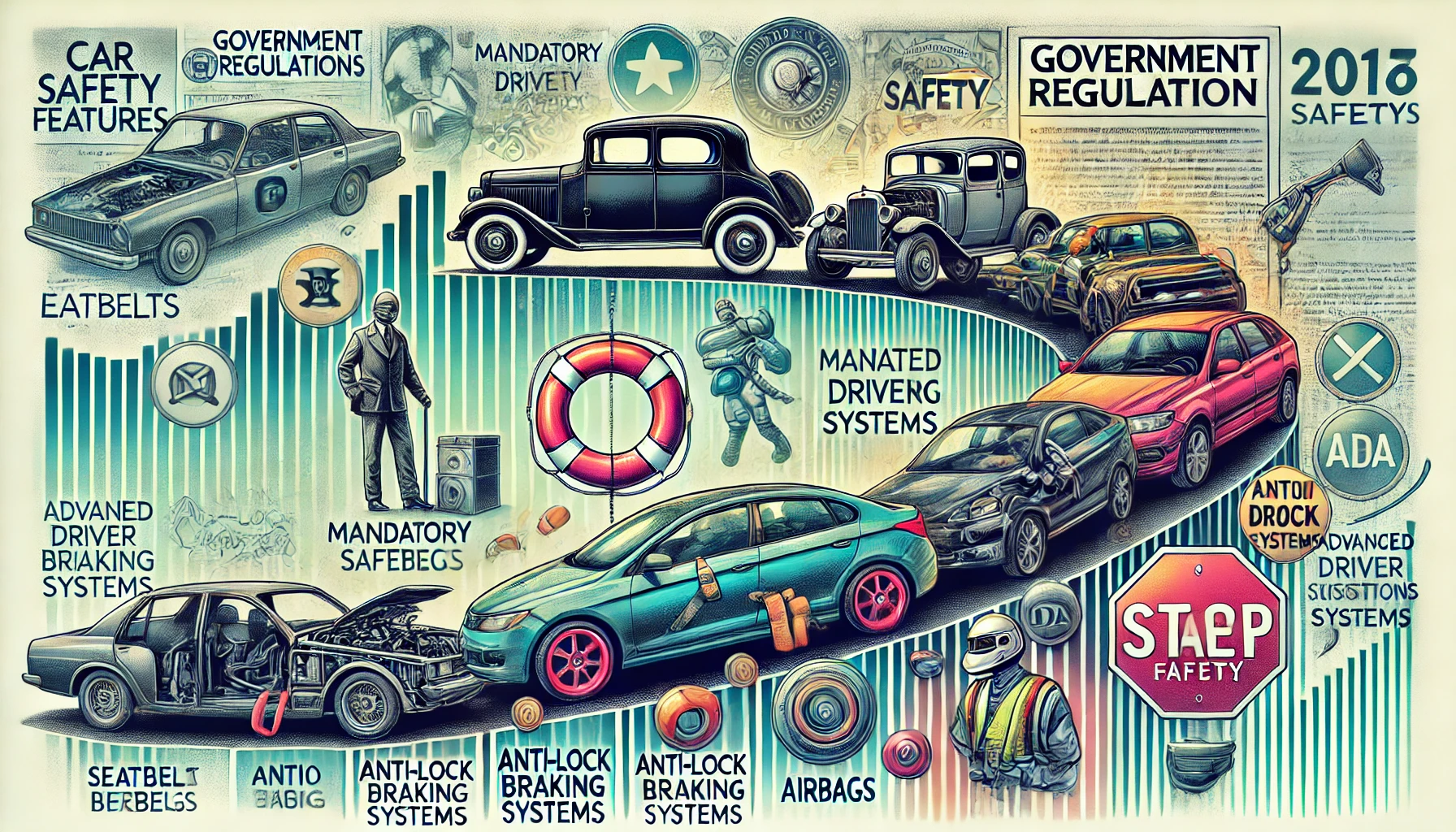
In the earlier days, drivers used to take their cars on the roads without much safety concern. It was, however, overcome by increased uptake in car ownership, making governments of the world begin to set measures to enhance vehicle safety. They devised specifications on what parts are mandatory and which are recommendable for cars, including seat belts and airbags. The National Highway Traffic Safety Administration (NHTSA) was set up for the United States in 1970. It contributed a lot in minimizing the instances of death that resulted from accidents characterized by dangerous automobiles.
The Role of Activists in Promoting Safety
It was not just the government promoting safer cars on the roads. Activists were also involved in this too. For instance, Ralph Nader wrote a book in 1965 called “Unsafe at Any Speed” that started a new line of thoughts about dangerous cars. His work and others led to laws demanding that car manufacturers include more features that would increase safety.
The Impact of Legislation on Car Safety
The laws and regulations that were put in place to enhance the development of the structure came into force. They implied that car manufacturers should install safety options that might not have been initially added. It was a result of reducing car accidents and their fatalities. Here’s a quick list of some safety features that became standard thanks to these laws:
- Seatbelts
- Airbags
- Anti-lock braking systems
It is essential to realize that calls for compliance with certain legal requirements for cars were in no way mere formalities. It was about rescuing people and ensuring that any individual and people could move around more securely. It shifted people’s mentality toward cars and the safety of today.
Technological Milestones in Car Safety
The Advent of Airbags: A Revolutionary Era
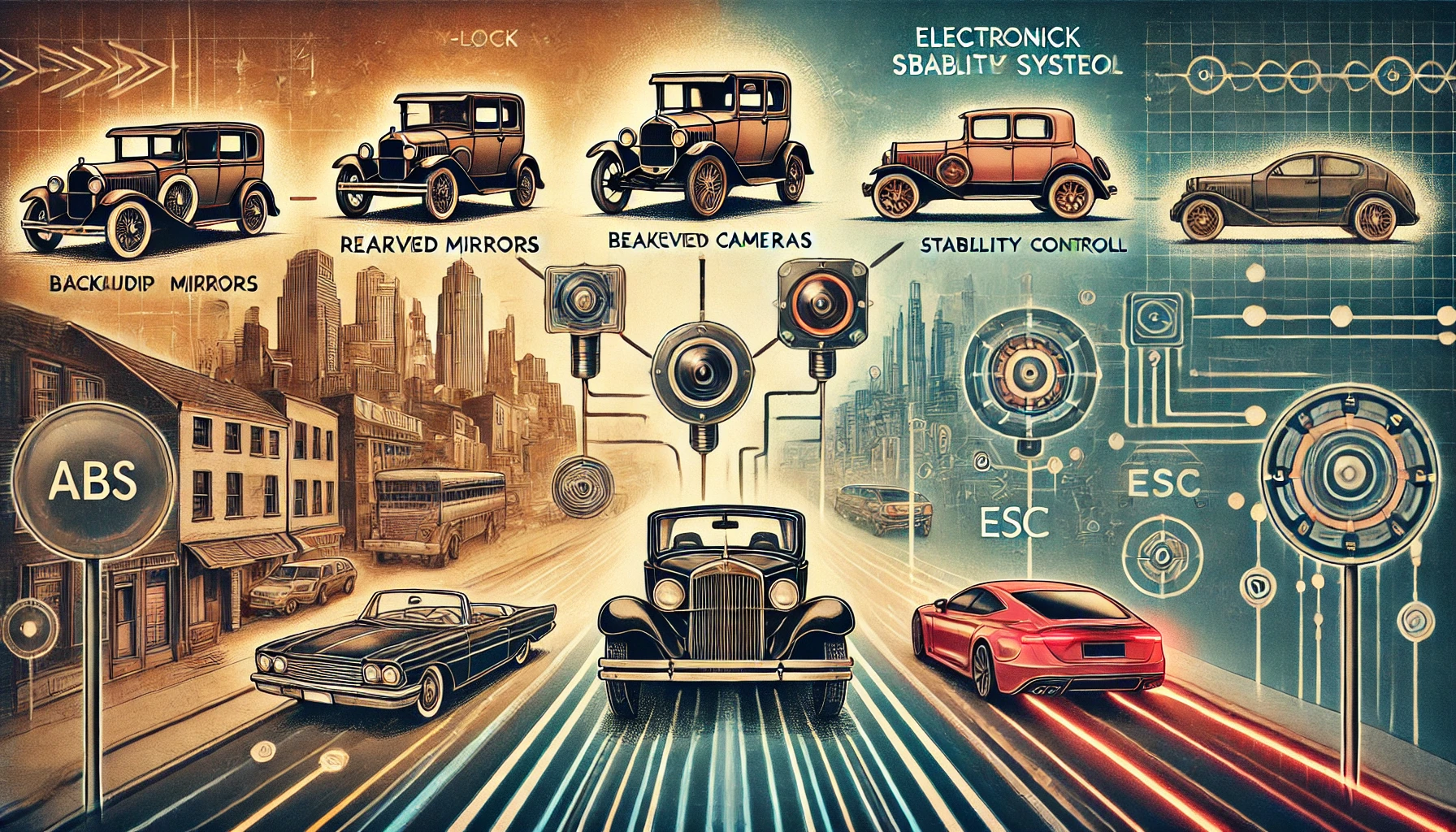
When airbags were first introduced, people got very excited about them. They began appearing in cars from the 1970 drive-about model. These were like safety nets during the crashes so people would not hit the dashboard or the steering wheel too hard. The concept was conceived by Walter Linderer and another man, John Hetrick. It was not until the early ’70s that these airbags began to reach cars and made rides a bit safer.
Anti-Lock Braking Systems and Electronic Stability Control
The antilock braking system, or ABS, assists drivers in maintaining control of their vehicles during harsh stomping and was also developed. You know, when you suddenly apply the brake pedal and pray not to skid? That is where ABS was most helpful. We also have Electronic Stability Control (ESC). This tech came later in the 1990s and assisted in maintaining the car’s steadiness so that it would not skid off the road.
Rearview Mirrors and Backup Cameras: The Evolution of Visibility
A rearview mirror originally was simple; it was a piece of glass through which you could see what was behind. Later, rearview mirrors evolved and included other functions, such as the ability to dim and different types of cameras. Backup cameras later gave drivers a clear view, particularly when reversing. These little gadgets have made parking and backing up much easier, reducing the number of those irritating collisions.
Modern Innovations: Advanced Car Safety System
Advanced Driver Assistance Systems (ADAS) and Beyond
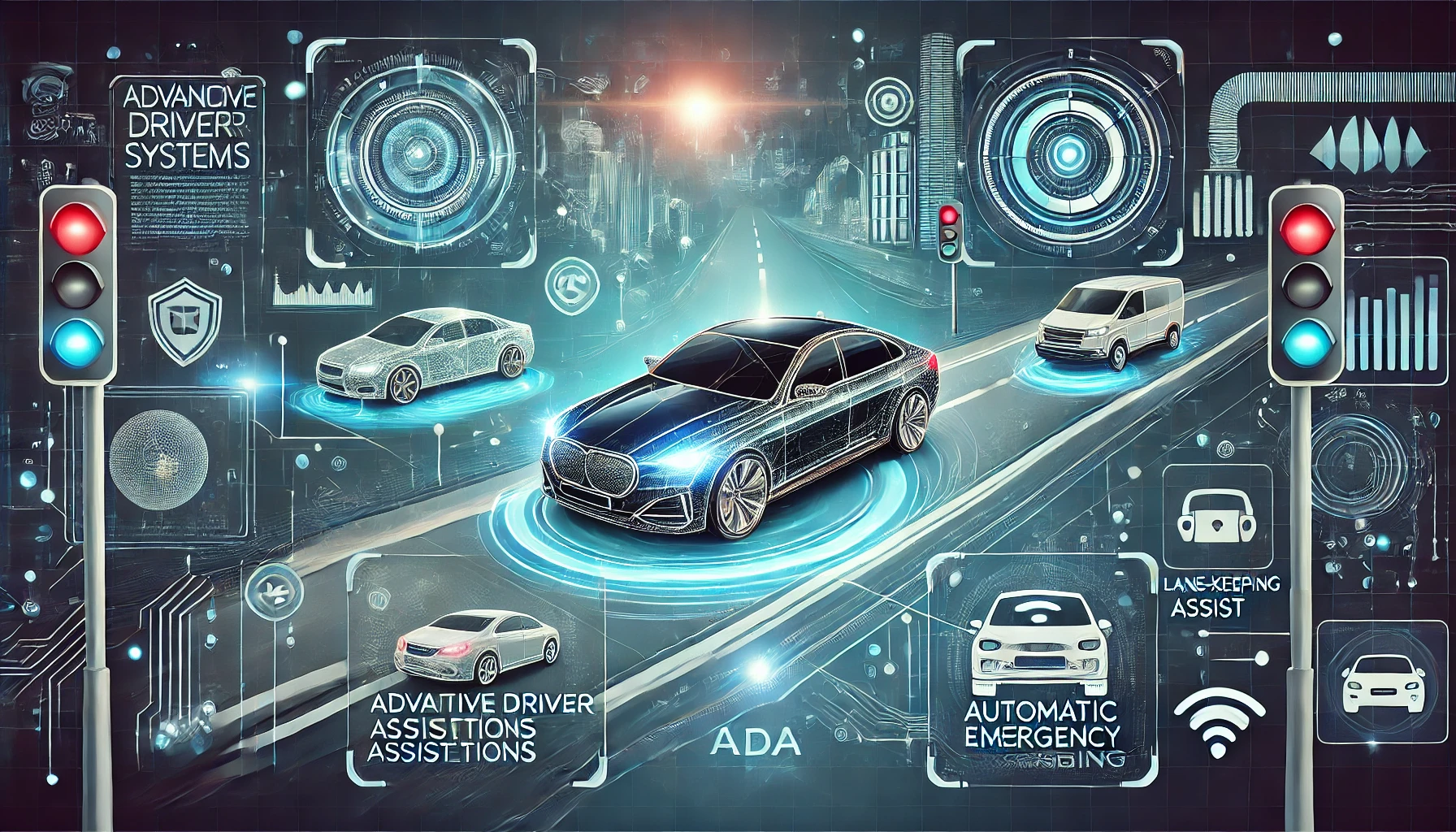
These systems are a feature of advanced car technology up to modern days. Some of the technologies they use include drivers’ cameras and sensors. ADAS features can act as a shield from accidents and make driving easier. Some common features include:
- Lane Keeping Assist: Assists in maintaining the car in its lane.
- Adaptive Cruise Control: This regulates vehicular velocity to ensure a safe following distance from the vehicle in front.
- Automatic Emergency Braking: Brings or halts the car’s movement if it perceives that there is a possibility of a crash.
Adaptive Cruise Control and Lane Keeping Assist
Adaptive cruise control is not only limited to the vehicle’s speed but also gives more. It maintains adequate gap or space with the car ahead of it. And this, in turn, means that the driver is less stressed. Lane-keeping assist also utilizes cameras to view the lane markings. For the same reason, as soon as the car begins to veer out of the lane, it will gently nudge it back into position effortlessly. It is because of these features that driving becomes safer as well as much more comfortable.
Automatic Emergency Braking and Collision Avoidance
Automatic emergency braking is one of the most critical safety features across the current generation. It employs a device that can identify whether an accident will occur. If the driver does not respond appropriately, this system can apply brakes independently.
This technology has demonstrated that the severity of the crash may be reduced by half. The technological change in cars means increased effort to make roads safer for everyone. Each of them has already become well-established, and as they remain the norm or the base of the systems in the future, we will see that many fewer accidents will occur.
The Future of Automotive Safety
The Integration of Autonomous Driving Technologies
The future is very interesting with car formations capable of driving for themselves. These self-driving technologies are gradually creating themselves in our conversation today. Can you picture yourself getting into your car, stating your destination, then relaxing in the back seat and watching the car navigate the entire distance? Today, some cars parallel park and can keep the driver within the lane, but fully autonomous vehicles? That’s where we’re headed. I may have seen this in sci-fi films, but real life sometimes can be as weird as those.
Artificial Intelligence in Car Safety
Self-driving car technology is part of Artificial Intelligence (AI) that reduces automobile risks. Just imagine AI’s ability to process tons of data much faster than we ever could in a day. It assists in identifying risks on the road and even makes some fast decisions that may prevent an accident. Any help given by such an assistant would be better than having an extra pair of eyes and a brain that is always awake and focused.
Predictions for Next-Generation Safety Features
As for the future, expect that car safety features will continue to become calmer and smarter. Here’s what might be coming up:
- Predictive Maintenance: Cars could also emit a warning that alerts drivers that the car needs an overhaul before developing a fault.
- Enhanced Connectivity: Cars can inform one another before an accident on the highway or if the road is blocked.
- Augmented Reality Dashboards: You can envision having your windshield displaying your navigation and alerts right on your windshield.
The future of cars is not simply about the bells, whistles, and gadgetry; it’s about safely getting every man and woman home. With this technology developing in the way that it is now, the roads could become significantly safer. It is a process that, however, is worth the effort.
Global Impact of Car Safety Innovations
Reduced Traffic Fatalities: A Safer World
Therefore, today, car safety features have come a long way and have done a great job in providing the consumer with needed safety. They’ve had a huge assistance in reducing the incidents of traffic deaths. Let’s look at seat belts, airbags, and all those other new high-tech gadgets in cars today. These things combine to ensure that people incur less risk on the road. It is like having a group of guardians every time one is behind a vehicle’s wheel. It is straightforward: the fewer the crashes, the fewer the lives lost.
The Influence of Car Safety on Insurance and Liability
Car safety is not only your safety but also the safety of your loved ones. It also has a lot to do with your pocket: Those are the types of cars that insurance companies hop on when they find them fitted with various safety gadgets. Why? That is why safer cars translate to fewer claims. A lower premium indicates that you will only develop a few claims. Also, when the worst does occur, it may be easier to discern whose fault it is because of the safety features that record everything.
Cultural Differences in the Adoption of Safety Features
Every location has its unique energy, similar to how countries differ in their focus on car safety features and technology. While some prioritize advanced safety technologies, others lag behind, influenced by finances and attitudes toward safety. The global demand for safer cars reflects a collective desire for reliability in travel. Popular safety technologies significantly impact car-related behaviors, insurance perceptions, and overall approaches to vehicle safety.
Conclusion
Car safety is a fascinating story of advancement and invention, having traveled a long way to get where it is today. Every stage has made driving safer for us, from the humble seat belt to sophisticated driver assistance systems. These innovations, including airbags, anti-lock braking systems, and electronic stability control, have transformed vehicles into life-saving machines.
Modern technologies like Advanced Driver Assistance Systems (ADAS) provide features such as lane-keeping assist, adaptive cruise control, and automatic emergency braking, giving drivers greater peace of mind and extra protection on the road. Future advancements like artificial intelligence and autonomous driving technologies promise even greater safety and efficiency in our digital world.
As roads become safer through innovative solutions, we edge closer to a future where accidents are a rarity. Engineers and safety advocates remain steadfast in their mission to save lives, making car safety a universal priority. Whether you’re a seasoned driver or a first-time car owner, these advancements ensure everyone can journey confidently and securely.
————————————————————————————————
Frequently Asked Questions
What are climate control systems?
————————————————————————————————
Modern cars have many safety features, like seatbelts, airbags, anti-lock brakes, and advanced driver assistance systems (ADAS) that help prevent accidents.
————————————————————————————————
How have seat belts changed over the years?
Seatbelts have evolved from simple lap belts to three-point seatbelts that secure both the lap and shoulder, significantly improving safety.
————————————————————————————————
What role do government regulations play in car safety?
Government regulations set standards for vehicle safety features, ensuring manufacturers include essential safety measures like airbags and seatbelts.
————————————————————————————————
What is ADAS, and how does it improve safety?
ADAS stands for Advanced Driver Assistance Systems. It uses sensors and cameras to help drivers avoid accidents by providing features like lane-keeping assist and automatic emergency braking.
————————————————————————————————
How do airbags work to protect passengers?
Airbags inflate quickly during a crash, creating a cushion that helps protect passengers from hitting hard surfaces inside the car.
————————————————————————————————
What is the future of car safety technology?
The future of car safety technology includes advancements in autonomous driving and artificial intelligence, which aim to make driving even safer.
————————————————————————————————
References:
- Anderson, M. (1903). Windshield wiper patent (U.S. Patent No. 743,801). United States Patent Office.
- Bénédictus, É. (1912). Safety glass patent.
- Bohlin, N. (1959). Three-point seat belt patent. Volvo Car Corporation.
- Linderer, W., & Hetrick, J. (1970). Airbag development and applications in automobiles. Journal of Vehicle Safety Engineering, 5(3), 12–15.
- National Highway Traffic Safety Administration (NHTSA). (1970). Establishment and impact of safety standards in vehicle manufacturing. U.S. Department of Transportation.
- Nader, R. (1965). Unsafe at any speed: The designed-in dangers of the American automobile. New York: Grossman Publishers.
- Volvo Car Corporation. (2020). The invention of the three-point seatbelt: A milestone in automotive safety.
————————————————————————————————
For comprehensive insights and in-depth information, explore our curated collection of articles Click Below:
A Comprehensive Guide to Honda Accord: A Timeless Choice for 2024 Car Buyers
Case Studies of Cities Heavily Impacted by Smog from Vehicle Emissions
Enhancing Air Quality and Comfort: The Function of Climate Control Systems in Automobiles
Global Data – EV Tracking System & Emission Monitoring
Global Road Safety & Vehicle Standards_ A Complete Guide
Riding High – The Top 5 Vehicles Dominating 2024
Toyota Corolla 2024 Review – Everything You Need to Know About Features, Price, and Performance
The 15 Leading Startups Revolutionizing Autonomous Vehicles in 2024
The Evolution and Appeal of Sports Cars_ A Comprehensive Analysis
The Impact of Green Technology on the Automobile Industry
The Science Behind Car Safety Features_ How They Work
From Seatbelts to Sensors_ The Journey of Car Safety Innovations
How to Buy a Used Car_ A Step-by-Step Guide
————————————————————————————————
We are a Trusted Name in Automotive Industry & Technologies!
Our Trusted Partners
We are proud to collaborate with industry leaders to deliver exceptional value and quality to our customers:
- Auto World Japan: A trusted name in exporting high-quality Japanese vehicles worldwide.
- BE FORWARD: A global leader in selling and exporting used cars with an excellent reputation.
These partnerships allow us to directly bring you reliable, top-tier services and products.

